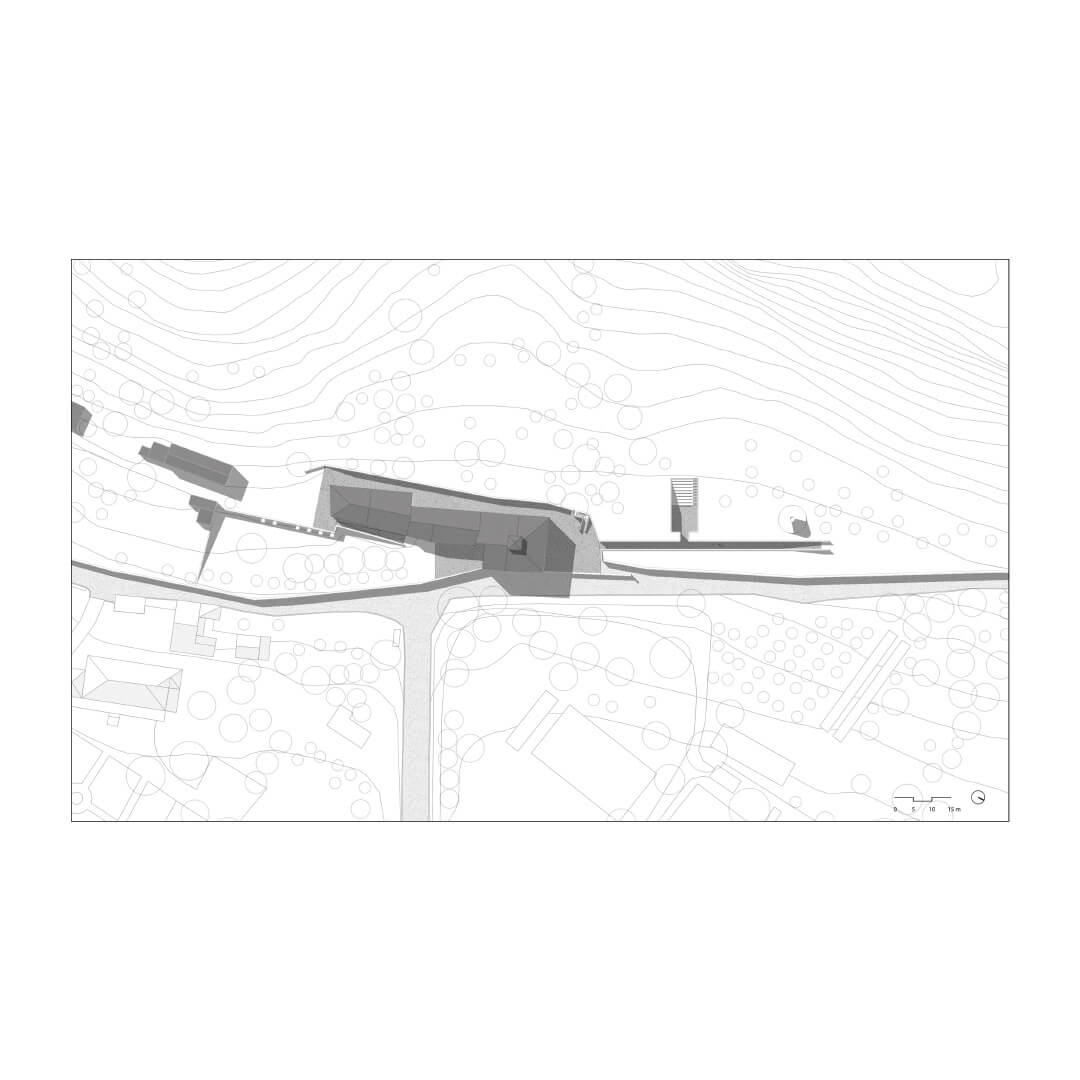Vittoria Silvaggi
The museum develops by excavating the natural terrain and building a promenade in the landscape.
The project is placed silently in a green area owned by the Longhi Foundation in the Florentine countryside. The rooms of the foundation now house Roberto Longhi’s summer residence, the library and archive as well as the art collection.
The lack of an area totally dedicated to the story of the figure of the famous art historian, his collection and his writings suggests the hypothesis of an expansion or addition to the foundation that could make the figure of the historian better known and host exhibitions of a permanent but also temporary nature, thus opening the foundation to the city. The project fits into this perspective and seeks to respond to the need for new environments dedicated to exhibitions, maintaining a strong link with the context and the surrounding natural landscape.

The project is characterized by being almost entirely underground: all the rooms are located below the countryside level, keeping the rural context almost unchanged. A path dug into the ground, with access from the foundation square, allows you to access the exhibition areas and, continuing, to reach the cultivated countryside behind. The excavated path excludes the context with the exception of the absolute view of the sky, and then ultimately offers a full view of the Florentine countryside and visually reconnects the foundation with the context. The exhibition spaces are accessed from an open-air room which once again, via steps, allows you to come back into contact with the landscape by climbing up.
The space of the steps and the open-air room can represent a further extension of the exhibition spaces. The latter are divided into two rooms with a distinct character: the first is a large rectangular room, designed to easily adapt to the needs of the most diverse setups, while the second is a circular room, the culmination of the route, which is illuminated from above through a roof cone-shaped, reminiscent of Etruscan and Tuscan funerary architecture, it lends itself to the observation of a sculpture or work of particular interest.
Author: Vittoria Silvaggi.
Location: Florence, Italy.
University: Università degli Studi di Firenze.
Year: 2023











